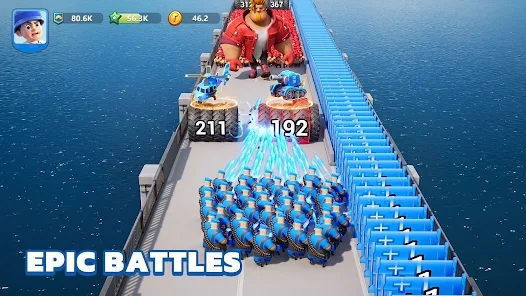Why Hyper Casual Games are Redefining the Landscape of Simulation Games
In recent years, the gaming world has witnessed a significant transformation, especially in the realm of simulation games. The rise of hyper casual games has played a crucial role in this shift. These games, characterized by their simplicity and accessibility, are challenging traditional simulation genres and offering new avenues for player engagement. But how exactly are hyper casual games reshaping what we thought about simulation gaming? Let’s dive deeper into this fascinating topic.
The Evolution of Simulation Games
Simulation games have always aimed to replicate real-life activities, providing players with intricate systems and experiences. From farming simulators to life simulators, these games allow players to immerse themselves in a controlled environment. Over time, however, the genre has expanded to incorporate broader themes and more simplistic gameplay, leading to the rise of hyper casual titles.
What are Hyper Casual Games?
Hyper casual games are designed to be played in short bursts, often featuring one-touch controls and minimalistic design. Their core appeal lies in their quick accessibility. These games have attracted millions of players due to their low entry barriers and engaging gameplay, drawing them into a realm where simulation and entertainment merge seamlessly.
Key Characteristics of Hyper Casual Games
- Simplicity: Lightweight mechanics that are easy to grasp.
- Accessibility: Free to play, with no steep learning curves.
- Short Sessions: Ideal for quick play, making them perfect for on-the-go gamers.
- Social Integration: Designed with sharing and competition in mind, fostering community play.
The Impact of Hyper Casual Games on Simulation Genres
The rise of hyper casual games has led to a unique intersection with simulation genres. Here are a few areas where this impact is especially notable:
1. Breaking Down Complexity
Traditionally, simulation games can be complex and time-consuming, requiring players to invest significant time to learn mechanics. Hyper casual games have developed simpler versions of complex simulation concepts, inviting a broader audience to engage.
2. Instant Gratification
In today’s fast-paced world, instant gratification has become a central theme. Hyper casual simulation games provide immediate feedback and rewards, keeping players motivated and returning for more.
3. Diverse Themes and Concepts
As we see with games like The Last Civil War Game – Oregon, hyper casual gaming has inspired the inclusion of various themes, bringing unique concepts to players who may not traditionally engage in simulation games.
Popular Examples of Simulation in Hyper Casual Games
Here’s a look at some noteworthy examples of hyper casual games that incorporate simulation elements:
| Game Title | Key Features | Simulation Aspect |
|---|---|---|
| Spring Valley | Farming mechanics, resource management | Farming Simulation |
| Idle Doctor | Healthcare management, upgrades | Hospital Simulation |
| City Builder 3D | Urban planning, economics | City Simulation |
Transitioning from Traditional to Hyper Casual
As the popularity of hyper casual games grows, traditional game developers are reassessing their approach. They’re exploring the potential of blending genres and creating games that appeal to both casual and hardcore gamers.
The Psychology Behind Hyper Casual Mechanics
What draws players to hyper casual games? A fascinating blend of psychology and gaming mechanics plays a role. These games often utilize an unpredictable "win-win" situation, where even losses feel rewarding. This “feel-good" factor is crucial in keeping players engaged.
Future Trends in Simulation Games
As hyper casual games continue to forge new paths in gaming, the future of simulation games looks promising. We can anticipate a surge in:
- Crossover titles that incorporate deeper simulation aspects into casual formats.
- Mobile gaming innovations that emphasize social experiences and collaborative play.
- Integration of AR/VR technologies into hyper casual titles, offering richer simulation experiences.
The Role of Community and Social Interaction
One significant aspect of hyper casual simulation games is their community-driven nature. Players are encouraged to share experiences, strategies, and compete against friends, transforming the solitary activity of gaming into a communal experience.
Final Thoughts: Balancing Simplicity and Depth
Hyper casual games have opened new doors for simulation gaming. They show us that simplicity doesn’t have to mean a lack of depth. By merging engaging gameplay with accessible mechanics, these games are redefining traditional concepts. Players are likely to see an influx of innovative titles that challenge perceptions and offer delightful experiences.
Conclusion
In a world saturated with gaming choices, hyper casual games have carved a niche for themselves. Their impact on simulation games is undeniable. As the gaming landscape continues to evolve, it will be exciting to see how developers merge traditional simulation mechanics with the engaging simplicity of hyper casual formats. Whether you’re a hardcore gamer or someone just looking for fun, the future looks bright.



